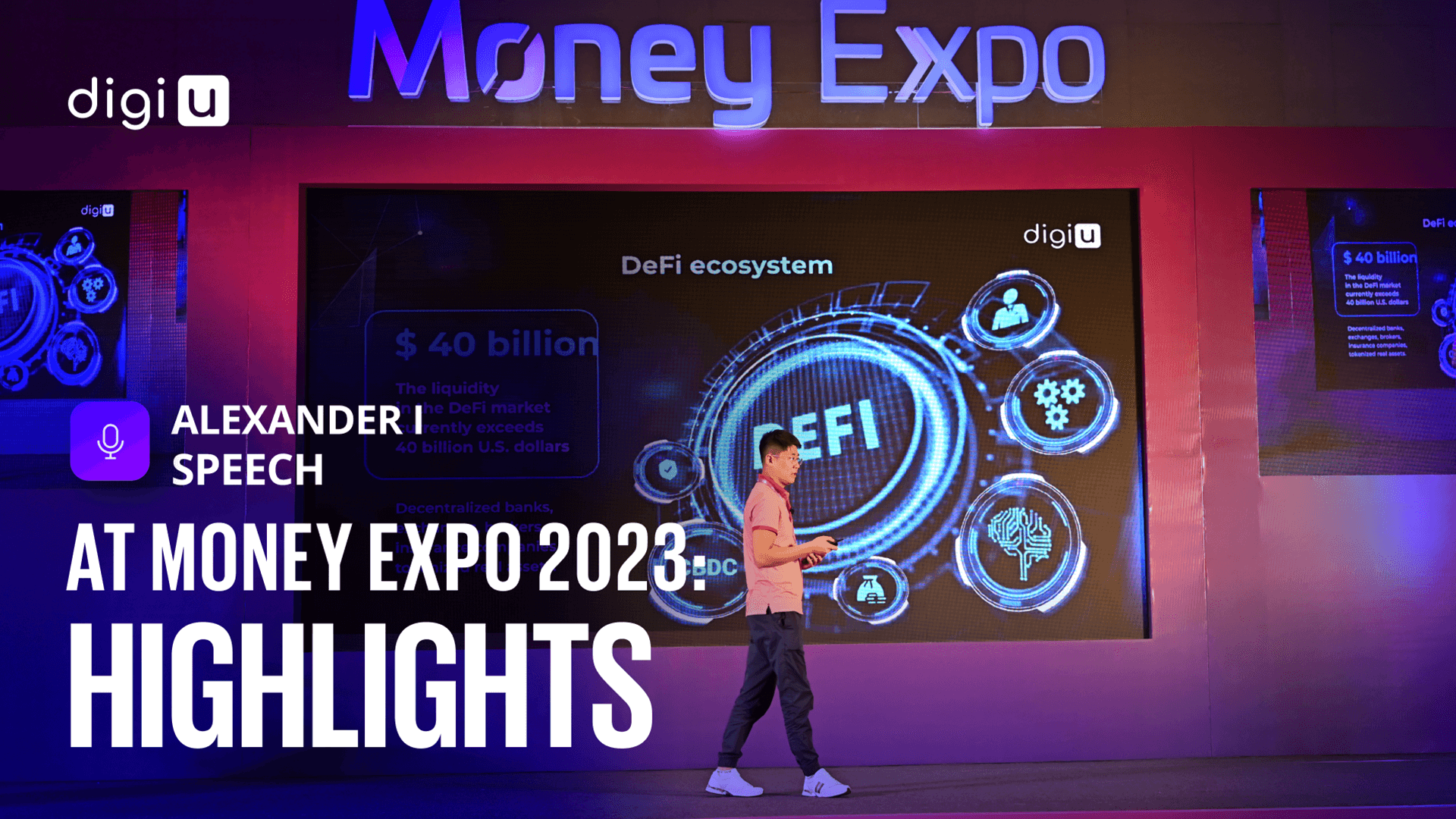Alexander I's Presentation at Money Expo 2023: Highlights

Alexander I's presentation focused on "The Future of DeFi: Synergy between TradFi (CBDC), DeFi, and RWA!"
"Today, I will talk about possible scenarios for the future of DeFi, CBDC, and the partly new narrative of RWAs – global assets formed through the tokenization of real-world assets such as real estate, commodities, and intellectual property. Each of these topics can be viewed as a separate major area, but I would like to examine them collectively to consider the challenges and opportunities in their integration.
Let's go through the key terms:
• CBDC – Central Bank Digital Currency of any country
• DeFi – Decentralized Finance
• RWA (Real-World Assets) – Tokens backed by real assets
• Cross-chain protocol – Solution for compatibility between different blockchains (private and public).
- CBDC
According to our data, over 110 countries, accounting for 95% of global GDP, are at various stages of CBDC implementation: some have already integrated them, and some are launching pilot projects.
Many countries have announced plans to implement CBDCs in 2024-2025. This means we anticipate the widespread adoption and use of new financial instruments alongside traditional fiat money in the near future. We also expect the emergence of numerous decentralized systems for cross-border settlements and the exchange of digital currencies between different countries!
- DeFi
Liquidity in the DeFi market currently exceeds $40 billion. The number of users and professional players in this market is growing each year and will continue to do so. The DeFi ecosystem already includes decentralized banks, exchanges, brokers, and insurance companies.
Everything we are accustomed to in the traditional financial world is presented in a decentralized manner, where intermediaries are replaced by special open-source software codes – smart contracts. DeFi is like a Lego financial constructor, where anyone can create their own products based on protocols.
Imagine a world where central bank-issued digital currencies seamlessly interact with the DeFi ecosystem!
By combining CBDC with DeFi, we can offer faster and more cost-effective financial services to the entire world. People without access to traditional banking services can benefit from these new tools!
- RWA
RWA offers the opportunity to tokenize real-world objects. Tokenization represents these assets as digital tokens on the blockchain, dividing ownership rights into smaller shares and increasing investment accessibility.
The largest real estate market in the world is valued at around $330 trillion. It surpasses commodities and stocks. For instance, the entire cryptocurrency market, including bitcoins, loans, NFTs, and RWAs, is just over $1 trillion.
If even 1% of real estate properties worldwide were tokenized, the cryptocurrency market would grow fourfold. Tokens that emerge in this scenario won't be for marketing purposes – they will be real assets!
As DeFi protocols become more secure, the adoption of RWAs will likely increase. To ensure the success of this system, a balance must be struck between regulatory compliance and the open nature of DeFi. Cross-chain management and smart contract audits that ensure fairness and transparency will help achieve this balance."
Next, Alexander I delved into the challenges along this path.
"According to the analytical service Defillama, there are currently more than 200 public blockchains. In my opinion, not more than 50 of them are active. There are solutions that allow for the rapid creation of private blockchains, such as HyperLedger Fabric, which Nigeria has used to launch its own CBDC. I want to emphasize that there are numerous blockchains in the world!
To integrate CBDC with DeFi, interaction protocols need to be developed. Through interoperable bridges, CBDCs can be tokenized and represented on different blockchain networks, enabling integration with DeFi applications.
Clearly, for the development of DeFi, interaction between different blockchains and financial systems is crucial. Cross-chain bridges and wrapped assets facilitate seamless fund transfers, contributing to the formation of a cohesive financial landscape.
Security is paramount in both traditional finance and DeFi, where smart contracts aid in automating financial operations. However, without adequate protection, they can be vulnerable to exploits and hacks!
To safeguard user funds and personal information, it's important to conduct security audits, implement 'bug bounty' programs, and regularly test smart contracts. Additionally, using formal verification mechanisms and insurance provides an extra layer of protection."
In conclusion, Alexander shared his vision for the future:
"We anticipate an interesting collaboration between traditional financial institutions and DeFi projects, leading to innovative solutions that combine the strengths of both worlds!
For example, banks can partner with DeFi platforms to offer efficient and cost-effective money transfer services, while DeFi projects can access liquidity from traditional financial markets.
By integrating CBDCs, DeFi, and real-world assets, we can enhance financial accessibility for non-banking populations. DeFi services, in combination with CBDCs, provide essential financial tools such as lending and loans to those currently without access to traditional banking services."
Alexander I concluded that the synergy between CBDCs, DeFi, and real-world assets holds tremendous potential for transforming the financial landscape!
In the coming days, we will also publish the presentation by CEO Alexey Ognev. Stay tuned for updates!
21.08.2023
To share the news, please enter your Personal Account!
Log in to your account